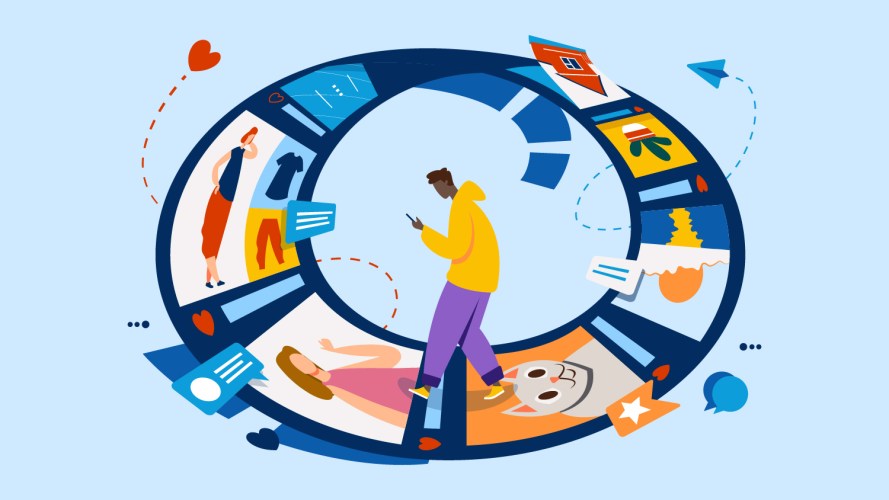5 Ways to Deliver Outstanding Customer Experiences With AI-Powered Social Media Insights



High-performing marketers around the world use AI-powered social media insights to build outstanding customer experiences. Here are five ways you can get started.

Chris Jacob
In the last 13 years, we’ve been inundated with updates, photos, and messages as the social media firehose took over our personal and professional landscape. And that firehose doesn’t show signs of letting up. Every day on every social media platform, people share more and more, everything from memes to pet photos — and their thoughts and feelings about products and brands.
When big things happen with your brand, from the good (like well-covered media events and successful product launches) to the not-so-good (like service issues and public relations crises), you can bet that your audience will add their thoughts to the online discussion.
When you’re a social marketer with limited resources, filtering through this ever-increasing volume of posts may seem daunting. That’s why artificial intelligence (AI) can be social marketer’s best friend.
In the latest State of Marketing report, Salesforce discovered that the highest-performing marketers turn to AI to identify prospects and engage with customers in relevant ways. Social listening can be powerful, but the real value comes from finding actionable insights in social conversations — and that’s where AI can help.
High-performing marketers around the world use AI-powered social media insights to build outstanding customer experiences. Here are five ways you can get started.
1. Predict customer actions and intentions
AI can forecast how people in your social audience may act — including their likelihood of making purchases. Think back to the last time you posted about wanting to buy a product or called out a brand for inadequate service online. AI helps brands understand the next best steps after those posts.
By analyzing a user’s posts, AI can assign a score indicating the user’s chance of performing certain tasks. Then, you can classify your audience based on those scores. Someone rated as likely to abandon your company could be prioritized in a service queue, and someone rated as likely to buy could be added to your list of top prospects.
You can also use AI to identify customers who ask for help on social media, even when they haven’t tagged your brand. If a human touch benefits a conversation that’s discussing you, where you aren’t tagged, you can automatically create service cases from social listening —based on urgency and customer value — to resolve the issue at hand.
2. Scan social images to yield insights
Social media platforms have always been highly visual, and they’ve only grown more so over the years. You can use AI tools like Einstein Vision in Social Studio to zero in on specific types of images in social posts and use these images to contribute to important insights.
Brand logos, nature scenery, individual objects, and many other kinds of image elements are all scannable using AI. For example, if you’re the social media manager for a restaurant chain, you can use AI to scan social media to identify menu items that people take pictures of and talk about. Maybe you always thought lasagna was your most popular dish … but AI may lead you to discover that people are even crazier about your tiramisu!
AI-powered image scanning can also inform service cases. Imagine you’re a car company, and unfortunately, you’re announcing a recall due to defective glove compartment mechanisms in your latest SUV. Einstein Vision can scan social media and identify real customers with those defective glove compartments. From there, it’s easy for your marketing and service teams to engage with those customers and help them find a resolution.
3. Report social insights in greater detail
If you’re using a modern social marketing suite like Social Studio, you already have lots of ways to get social insights — from identifying sentiment and analyzing demographics to refining audience personas.
AI also allows you to get even more specific and detailed with your reporting. Using automated labels, AI automatically rates your audience’s social posts according to the attributes you’d like, including subject matter, authors, mutual followers, and more. These labels can inform future marketing actions, from creating service cases to generating new leads.
Here’s an example of a social media post with six automated labels:

Ben appears to be attending Connections and having a great time. He’s even got some follow-up questions about social automation! Social Studio has identified Ben’s influencer score of 60, which is pretty high, so AI automatically added the ‘Influencer’ Author Label to this post. Ben’s influencer score follows his posts wherever they appear throughout Social Studio.
AI also saw that Ben mentioned Connections and social automation, and added those as ‘Topic’ Post Labels. Ben’s post will be included in a list of all the posts with those topic labels, which also triggers a new marketing journey. Since Ben said that he wants “to learn more,” AI labeled the post in the ‘Product Enquiry’ Category. This will trigger a nurturing or sales journey.
4. Filter social noise and cut through the clutter
You’ve probably seen it before — an endless thread of posts and reposts where friends aren’t doing much besides tagging one another. They’re fun and flattering for those involved, but for a social media community manager, they can be a bit of a headache. It’s hard to cut through the noise and find genuine complaints and sales inquiries.
AI can easily filter through noisy posts like these and deprioritize them — or even automatically close them, so your team doesn’t even have to bother with them. At the same time, AI will automatically find meaningful tweets from influencers and regular audience members alike, so you can see what they’re saying. AI can even automatically route posts and customer profiles to service team members based on keywords and locations for faster resolution.
5. Send emails when it matters
Ever receive marketing emails you just don’t care to open? We all do — and our customers do, too. This usually happens when companies send too many emails, and the receivers get fatigued by the volume. Unfortunately, this causes us to miss the emails that share information relevant to our interests.
By using AI to connect social media insights with your email strategy, you can schedule relevant email alerts to send, only when social conversations about products and events reach a fever pitch. This helps ensure emails are only sent when audiences are most likely to engage.
You can also use AI-powered social insights to alert your public relations team when there’s an unusually high amount of negative sentiment surrounding your brand on social. This gives them a clear understanding of what the problem may be and allows them to quickly develop a communications strategy (including email) for defusing the situation.
Want to learn more?
Explore Social Studio and discover how it works with our free Trailhead course, Get Social with Social Studio.
If you have more questions about Social Studio, we’re here to help. Get in touch with a Salesforce marketing advisor and we’ll help you chart a course to social success.























